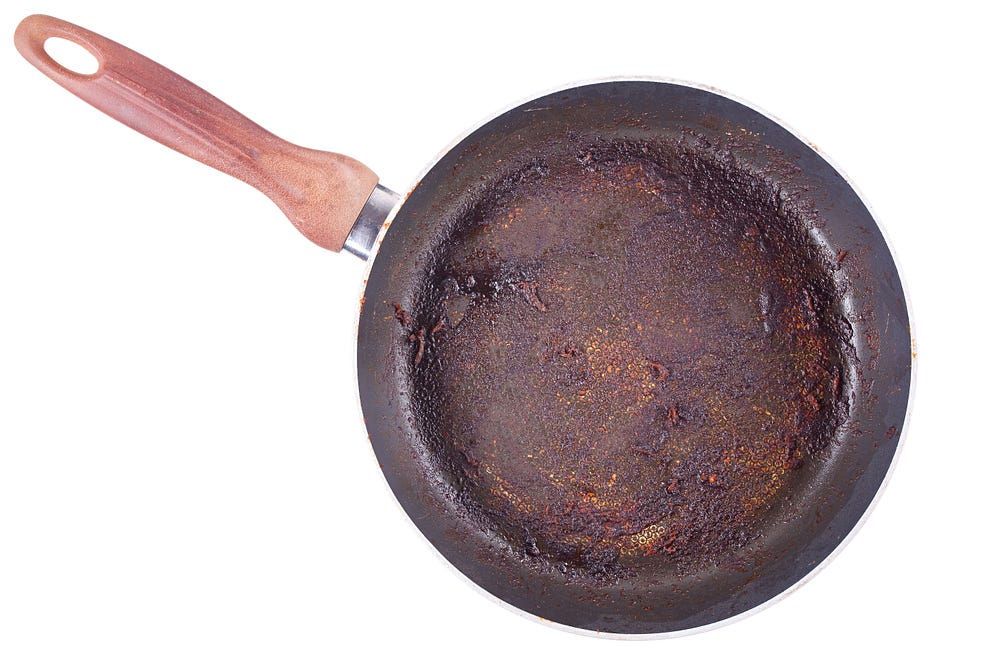Member-only story
Why Some Professional Chefs Hate Nonstick Pans
Teflon is more polarizing than you’d think

For the last 50 years, the most popular type of pan has had some sort of nonstick coating, and the most desired characteristic of cookware has been keeping your food from clinging to its cooking surface. I don’t know what trauma triggered this obsession — perhaps burnt and shredded chicken thighs, or one too many broken egg yolks. But I do know that it’s a shame. First, because nonstick cookware is a distinctly mediocre choice for most cooking. Second, because surviving without nonstick cookware isn’t even that difficult.
I fell out of love with nonstick when caramelizing onions. Have you ever caramelized onions? Did you succeed? If you didn’t, maybe you were using a nonstick pan.
Perfect caramelized onions — along with properly seared steaks — can’t happen without a bit of stickiness. As you cook them, the fond forms at the bottom of the pan. The fond is the sticky brown glaze and tiny particles of browned food that form when the sugars in your food break down. Caramelization turns the simple sugar molecules in an onion into more than a hundred smaller and more interesting compounds, including molecules that give you nutty, toasty, bitter, and even rum-like flavors. Nonstick means no fond, and a plate of steamed onions. Don’t bring those near…









